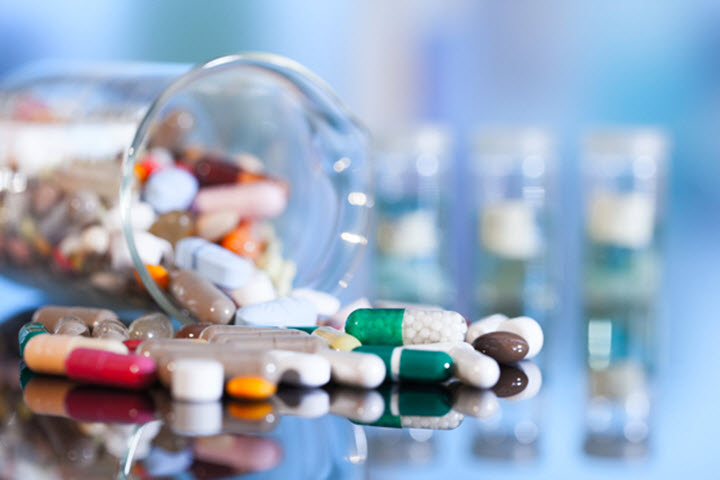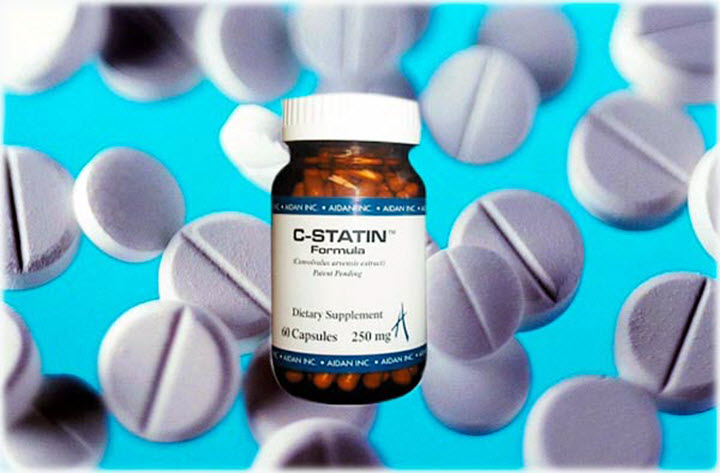Almost everyone knows that an unhealthy and unhealthy diet, replete with meat and fatty foods, mayonnaise and sauces, eggs and sugar, can provoke an increase in cholesterol levels. People have also heard about the harmful effects of these deposits on the body and the negative consequences for the body with high cholesterol. Therefore, statins for lowering cholesterol have become popular recently, which doctors often prescribe to their patients.
Despite the visible positive results from such a cholesterol medicine, the opinions of doctors today are not unambiguous: do such drugs help or harm more to lower blood cholesterol?
The human body is designed in such a way that there is nothing superfluous and unnecessary in it. Every day, new cells and substances are produced that are vital to all systems and organs as a whole and individually. The lack of nutrients and useful trace elements provokes complex failures and pathological conditions.
Cholesterol refers to fatty alcohols that are necessary for the normal functioning of the cells of all living organisms, including nerve cells. It performs an indispensable synthesizing and restorative function in the body, eliminating any tissue damage.
Consequences of excess cholesterol deposits
Since cholesterol accumulates in tissues and cell membranes, its excessive amount can lead to pathological changes, primarily in blood vessels.
- The accumulation of deposits forms the so-called cholesterol plaques.
- Over time, the deposits begin to crack, creating a favorable environment for the formation of blood clots.
- The lumen of the vessel narrows, blood circulation is disturbed, and the risk of developing cardiovascular pathologies and atherosclerosis increases.
Most experts agree that excess cholesterol in the blood is provoked by environmental and nutritional factors. However, there is another opinion: the body is able to increase cholesterol levels in response to important cellular failures, therefore it is important, first of all, to identify and treat these dysfunctions and their causes in the first place.
Mechanism of directed action of statins
Statins for cholesterol are considered a panacea, helping to reduce the risk of deposits with a decrease in the subsequent production of cholesterol by the liver. Simplistically, excess cholesterol is called “bad”: it is believed that it is precisely its production that drugs of the statin group can reduce.
In addition, these drugs have a pronounced therapeutic effect aimed at:
- To lower cholesterol levels by suppressing its production in the liver.
- The fight against the decomposition of adipose tissue into various substances in the body.
- Increasing the indicators of "good" cholesterol by reducing the "bad".
- Reducing the risk of the likelihood of progression of cardiovascular pathologies.
Drugs of the statin drug group are prescribed by the doctor based on the data obtained from the patient's examination. It is the doctor who will be able to correctly determine at what level of cholesterol therapy with this medicine should be started.

Medical indications for the appointment
Specialists who prescribe statin drugs to their patients indicate that these drugs are used not only as cholesterol-lowering drugs, but also as the most effective anti-inflammatory drugs. Most doctors do not deny the fact that the root cause of atherosclerosis can be sluggish chronic inflammation in the patient's body, primarily of vascular etiology. When prescribing drugs that stop the risk of atherosclerosis, doctors take into account possible vascular inflammation and the fact that statins are usually also treated.
- The drugs of this spectrum of action reduce the risk of the possible occurrence and progression of myocardial infarction. According to clinical trials, none, even the most potent drug, gives such a pronounced preventive effect as statins.
- The likelihood of ischemic stroke in patients who regularly take a statin drug is reduced several times. However, it is necessary to recognize the fact that the risk of developing hemorrhagic stroke while taking statins, on the contrary, can increase dramatically. Therefore, statins are not recommended for patients with a history of hemorrhagic stroke.
- The effective effect of taking this group of drugs was also recorded in patients with myocardial infarction. In the early days of the disease, doctors usually prescribe high doses of the drug, as the patient's condition improves, the dosage is reduced.
- Statins can also slow down the risk of atherosclerosis. This complex pathology is complex in nature and carries a high risk of developing cardiovascular pathologies.
How to choose the right drug for treatment, at what dosage and how to take statins, only a doctor can correctly determine. Given the fact that treatment with this group of drugs can provoke complex side effects, only a specialist will be able to minimize the risk of possible consequences from taking statins.
Generations of statins
Specialists distinguish between several generations of that dosage form. There are those that belong to the group of "natural statins", but there are also completely synthetic drugs.
Natural generations include dosage forms isolated from penicillin and similar fungi.
| Generation | Characteristics and features | Representatives |
|---|---|---|
| First | Weak and not pronounced effect on cholesterol levels Wide range of side effects | Lovastatin Simvastatin |
| Second | Prolonged action of the drug Moderately pronounced effect on cholesterol levels | Fluvastatin |
| Third | A pronounced decrease in "bad" indicators, including triglycerides Increasing "good" indicators | Atorvastatin |
| Fourth | Qualitative ratio of efficiency and safety indicators High risk of side effects | Rosuvastatin |
Natural or natural statins have the same range of side effects as synthetic counterparts. Even those natural forms that do not belong to medicinal species, such as red yeast rice, can provoke no less complex side effects in the body.

Side effects
Side effects from taking statins, most often, do not appear immediately, because most patients do not associate the worsening of the condition with treatment with this medication. A person who regularly takes these drugs may soon experience ailments, characterized by an increase in the intensity of manifestation:
- sudden and sudden bouts of dizziness;
- increased fatigue and drowsiness;
- decrease in memory functions;
- attacks of tachycardia;
- dysfunctional bowel disorders, manifested by constipation or diarrhea;
- itching in certain parts of the body;
- pain and aches in muscles and joints.
Side effects may occur separately, may occur at the same time. Long-term treatment with these drugs can provoke the development of complex pathologies in the body, which makes it possible for doctors to say that statins are harmful to the patient, and in some cases the pronounced therapeutic effect is much weaker than the possible risk of progression of complex pathologies while taking them.
Harm from statins
Cholesterol pills direct their action to stop cholesterol production in the liver. Along the way, the drug inhibits the production of other active substances that the body needs for the normal course of biological reactions. Regular intake of drugs of the statin group provokes a constant lack of active substances and, as a result, the progression of those pathologies that the patient has not previously suffered from.
central nervous system
Frequent side effects and subsequent chronic pathologies from regular use of statins are pathologies of the functioning of the central nervous system. First of all, in patients who regularly take statins to lower cholesterol, there are:
- amnesia;
- hyperesthesia;
- paresthesia;
- peripheral neuropathy.
With regular and long-term treatment with statins, the patient may develop complex pathologies:
- depressive states (cases of suicidal behavior have been noted while taking statins);
- sudden mood swings;
- memory losses;
- sleep disturbance.
As a rule, these pathologies can also be aggravated by provocations from other systems and organs. The patient may experience severe pain in the joints and muscles, which, in turn, leads to an increase in depressive tendencies.
Endocrinological failures
Statins are also dangerous because they provoke metabolic disorders in the human body, especially against the background of long-term use.
The patient often experiences the following side effects:
- hypoglycemia;
- weight gain;
- potency disorder in men;
- peripheral edema
The most difficult failure in the metabolic system is considered to be diabetes mellitus, which is often diagnosed in patients who regularly take statin drugs to normalize blood cholesterol levels.
Gastrointestinal tract
The gastrointestinal tract often reacts to statins. Given that these drugs actively affect the functioning of the liver, it is this organ that is subjected to an initial and regular adverse attack from active medicinal substances. For the patient, this threatens:
- disorders and dysfunctions of the intestine;
- nausea and vomiting;
- painful cramps in the abdomen.
To chronic complex health disorders against the background of taking satins, experts include:
- hepatitis, including chronic;
- acute and chronic pancreatitis;
- cholestatic jaundice;
- anorexia.
A patient who takes statins regularly in order to lower cholesterol earns complex gastrointestinal pathologies that require serious and long-term treatment, and in some cases, threaten death.
excretory system
The kidneys also suffer from constant contact with drugs of the statin group. Often in patients on the background of taking these drugs, acute and chronic renal failure begins to progress. Side effects develop slowly and do not appear immediately, so it is often possible to diagnose a pathology in a patient already at the stage of chronic progression of the pathology.
The drug is indicated
Despite the constant controversy and discussion surrounding the harm and benefits of statins for cholesterol, specialists continue to prescribe this series of drugs to their patients. In some cases, treatment with these drugs is mandatory, as it is an accompanying therapy that improves the entire treatment process.
Statins should be taken for the following diseases:
- acute coronary syndrome;
- vascular lesions of atherosclerotic etiology;
- post-stroke conditions;
- state of hypercholesterolemia;
- recovery period after stenting, coronary bypass surgery, angioplasty;
- angina;
- post-infarction conditions;
- hypertension, accompanied by frequent hypertensive crises;
- vegetovascular dystonia;
- metabolic syndrome.
The selection of the drug is made by the doctor on the basis of the patient's comorbidities or predisposition to them.
Statins are contraindicated
There are conditions in which the use of statins is strictly contraindicated. The benefit of statins from cholesterol in this case is completely nullified by the harmful effects that the drug has on the body. Statins are contraindicated in patients with a history of:
- thyroid pathology;
- chronic and acute renal pathologies;
- disruptions in the functioning of the endocrine system;
- allergic reactions;
- complex violations of hepatic functions;
- cataract or high risk of its development;
- individual intolerance to the drug.
Do not prescribe these drugs also to pregnant women, nursing mothers. Do not take them also to women planning a pregnancy. With caution and only as prescribed by doctors, statins are taken by elderly patients and women before menopause.
Other side effects
Experts identify a category of patients in whom the risk of side effects from taking statins is especially high. These include:
- patients over 65 years of age;
- people with a history of liver or kidney disease;
- patients who abuse alcohol;
- people taking several cholesterol-lowering drugs at the same time.
In such patients, side effects are stronger and more pronounced.
- The most common side effect is back and muscle pain. Muscle problems can cause mild discomfort or be so severe that they make it difficult for the patient's daily life: it will become difficult to climb stairs or even walk.
- The destruction of muscle tissue is a deadly but extremely rare side effect, as a result of which substances that damage the kidneys enter the bloodstream. The patient feels acute pain and symptoms of kidney failure.
- Taking statins can cause worse blood test results for ALT, AST, and other liver enzymes.
- Statins increase blood sugar and increase insulin resistance. People who are predisposed to type 2 diabetes have an increased risk of developing the disease. The risk group includes patients with metabolic syndrome - overweight, hypertension, poor blood tests for cholesterol and triglycerides.
- Taking statins can cause nausea, bloating, diarrhea, or constipation. Statins can exacerbate digestive disorders that the patient already had before starting treatment with cholesterol drugs.
Therefore, statins should only be taken when needed. It is not recommended to resort to treatment with these drugs in the following categories of patients:
- patients with elevated cholesterol, but no history of atherosclerosis;
- no history of heart attack, coronary heart disease;
- there are no deposits of calcium in the arteries.
Medicine for a special category of patients
Experienced practitioners prefer to try the diet for several months before prescribing statins to patients at low cardiovascular risk.
Conventional medicine recommends a low-fat, low-calorie diet to lower cholesterol levels. A low-carb diet helps a lot.
In the event that diet therapy has not brought results, it is worth remembering that the appointment of statins for patients of a special category has its own characteristics:
- Statins are not prescribed for children and adolescents. The exception is cases of diseases with rare genetic pathologies.
- Elderly patients are initially prescribed half the recommended dosage, gradually increasing to normal.
- The drug for the prevention of stroke is undermined by the doctor especially carefully, since it should be as gentle as possible.
- All patients who have undergone reconstructive surgery on the vessels of the heart should take cholesterol pills. Treatment tactics must be aggressive because the risk is high. It is important to combine taking medications with a healthy lifestyle.
The cause of atherosclerosis, heart attack and stroke, most often, is not elevated blood cholesterol, but chronic, unexpressed inflammation. Chronic inflammation is the result of the body's attempt to neutralize junk food, toxins, infection, and the effects of a sedentary, sedentary lifestyle. Unfortunately, it is this inflammatory process that damages the walls of blood vessels from the inside, and atherosclerotic plaques form at the sites of damage.
Whether it is necessary to drink statins for high cholesterol is up to the patient to decide. It is worth listening to the advice of doctors on the correction scheme and treatment, but in some cases it is better to replace statins with diet therapy and a healthy lifestyle. Doctors, for their part, must clearly and intelligibly explain to the patient their decision to prescribe him a drug course with statins.


















